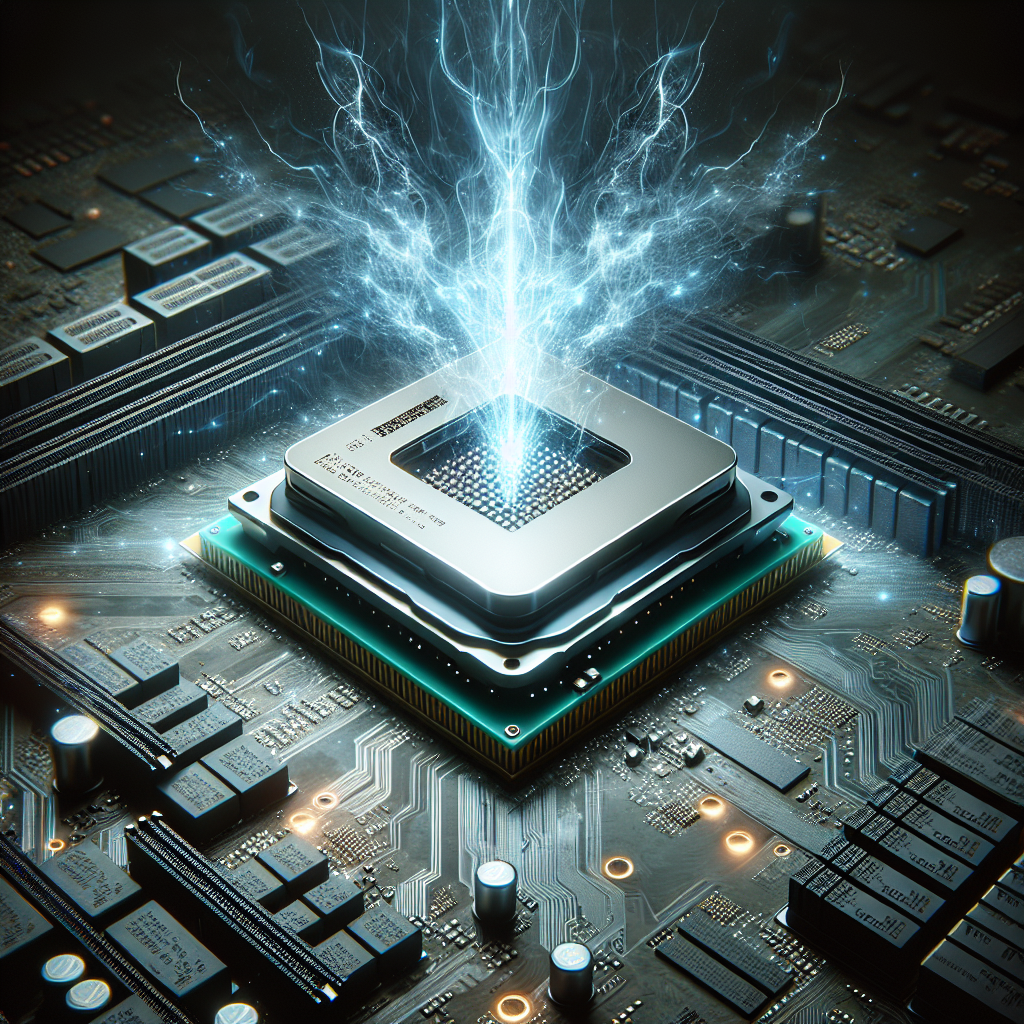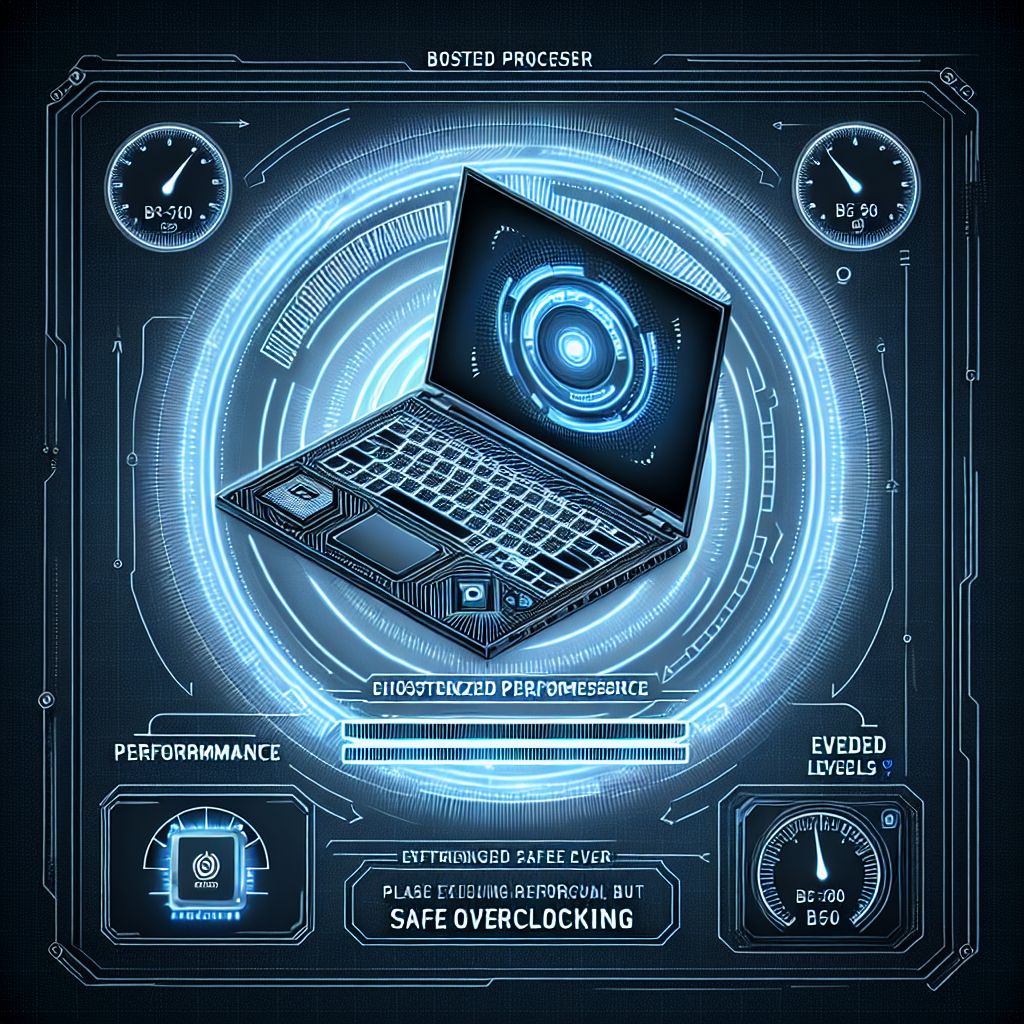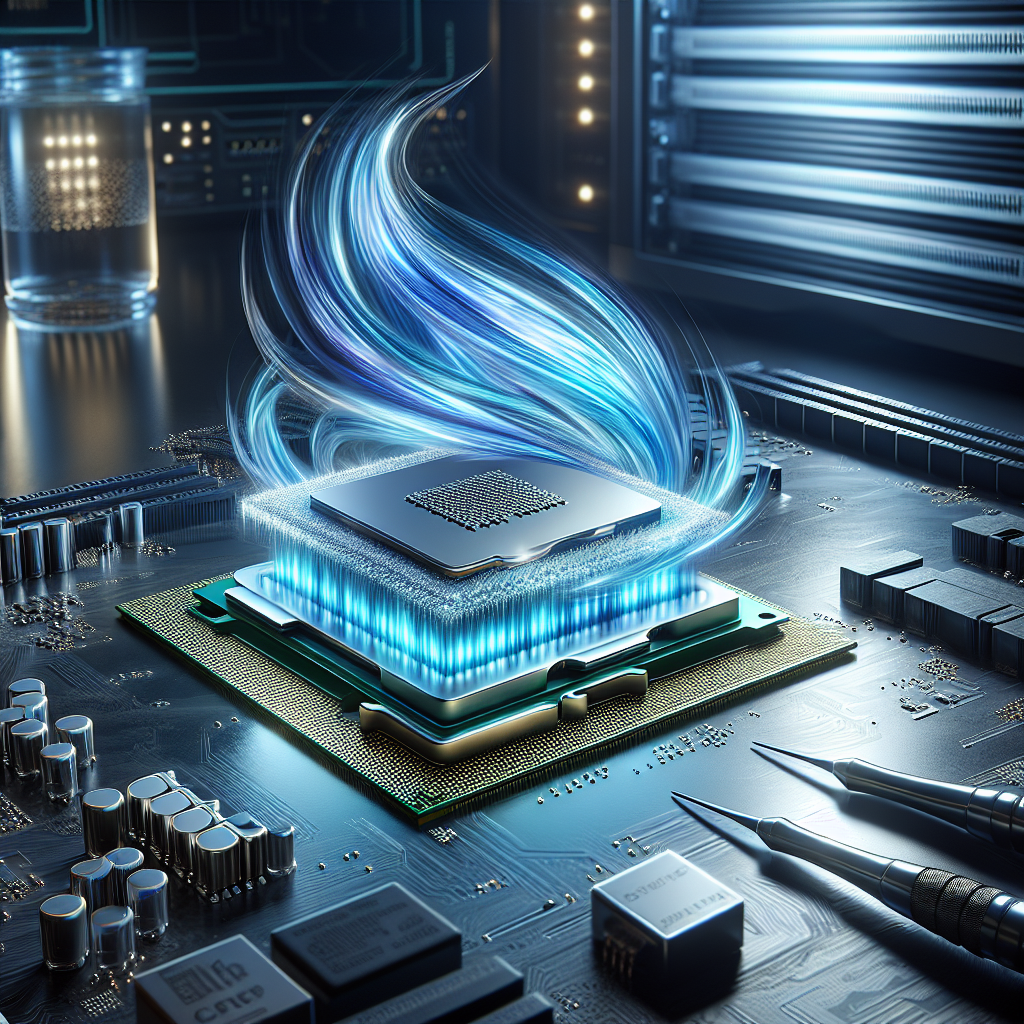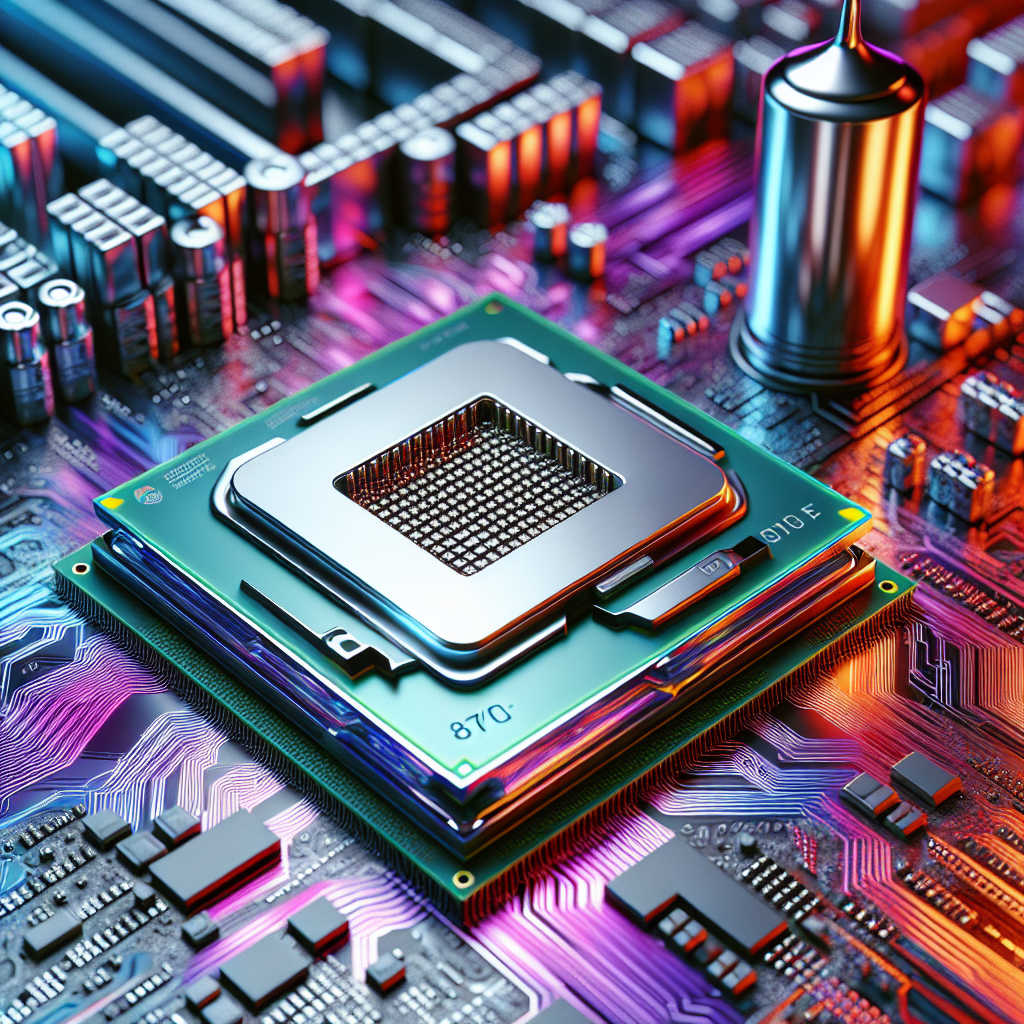Your cart is currently empty!
Tag: Overclock
MeLE Overclock X5 Mini PC Dual LAN i5 Processors i5-12450H (up to 4.4GHz) Micro PC Dual Channel 16GB DDR4 512GB ROM Small Desktop Computers Four Screens Display, HDMI2.0+DP1.4, 2.4G&5G WiFi, BT5.2
Price: $359.99
(as of Jan 28,2025 07:56:26 UTC – Details)Product Description







1 Intel Core i5-12450H2 Supporting OS
3 Fast and Efficient
4 Four Screens Display
5 Packing List
High Efficiency Cooling Fan


The cooling system uses an all-copper heatpipe radiator, which rotates at a speed of 2,800 rpm. The lower speed helps to reduce fan noise and prolongs the fan’s lifespan, allowing the fan to run at its highest speed for a stable period of up to 30,000 hours or more.





1 Low Power Consumption2 16GB/32GB SO-DIMM DDR4
3 Dual Ethernet Ports
4 M.2 NVMe SSD extandable
5 Dual Band WiFi and BT5.2





1 Muti-ports2 4K
3 Space Saving
4 For Industrial IoT
5 For Video Conference





1 For Office2 For Digital Signage
3 For Home Theater
4 For Astrophotography
5 For Live Streaming
MeLE Brand Mini PC Options
Add to Cart
Add to Cart
Add to Cart
Add to Cart
Add to Cart
Add to Cart
Customer Reviews
4.2 out of 5 stars
3
4.0 out of 5 stars
107
4.3 out of 5 stars
57
4.0 out of 5 stars
107
4.3 out of 5 stars
57
4.2 out of 5 stars
82
Price
$449.99$449.99
$179.99$179.99
$145.99$145.99
$179.99$179.99
$209.99$209.99
$159.99$159.99
CPU
Intel Core i5-12450H
Intel Alder Lake N100
Intel Alder Lake N100
Intel Alder Lake N100
Intel Alder Lake N100
Intel Cerelon N5105
Memory
32GB DDR4
8GB DDR4
4GB DDR4
8GB DDR4
16GB DDR4
8GB DDR4
Storage
1TB
256GB
128GB
256GB
512GB
256GB
Frequency Basis
2.0-4.4GHz
800MHz-3.4GHz
800MHz-3.4GHz
800MHz-3.4GHz
800MHz-3.4GHz
2.0-2.9GHz
Video Out-put
2X HDMI (4K@60Hz), 2X USB-C
2X HDMI (4K@60Hz)
1X HDMI, 1X USB-C, 1X DP1.4
1X HDMI (4K@60Hz), 1X USB-C
2X HDMI (4K@60Hz), 1X USB-C
2X HDMI (4K@60Hz)
Auto Power on
Wake on LAN
RTC Wake
PXE
BIOS Reset
【Powerful and Efficient】This small form factor pc is equipped with i5-12450H 8 Cores Processor up to 4.4GHz and 1.20GHz GPU UHD Graphics and supports install Windows 11 Pro 64 Bit OS, Linux, Ubuntu and Debian like a conventional computer. It supports Wake on LAN / PXE Boot/ Auto Power on/ RTC Wake, perfect for a wide variety of usages such as basic office tasks, multimedia streaming, WMS, kiosks, smart home, surveillance, digital signage, and industrial IOT.
【Larger Capacity Expandable】The mini computer is built-in 3200MHz 16GB DDR4 RAM(can be upgraded up to 64GB MAX with 2 available memory slots). It also comes with a 512GB SSD, supports upgrade the storage to 4TB (excluded) via PCIe4.0 x4 M.2 2280 NVMe SSD and via M.2 2280 SATA SSD up to 2T (excluded). With a Micro SD card slot can be added separately to expand the storage up to 2TB.
【1.20GHz UHD Graphics 48EUs & Four Screens Display】MeLE mini pc comes with 1.20GHz UHD Graphics 48EUs to support 4K FPS video playback,which brings you a gorgeous visual experience. The two HDMI ports and the two USB-C ports supporting DP1.4 allow you to connect four displays at the same time, greatly improve your work efficiency.
【Dual Ethernet Ports + Dual Band WiFi + BT 5.2】The mini pc with dual NIC design provides more applications, such as firewalls, multichannel aggregation, file storage servers, etc. At the same time, dual-band Wi-Fi, BT5.2 with more substantial resisting disturbance and more stable wireless signal. No matter how complicated your environment, MeLE i5 mini desktop computers can provide a relatively stable and smooth network.
【24/7 Continuous Operation & Rich Interface】The MeLE Overclock X5 i5-12450H micro pc supports 24/7 uninterrupted and continuous operation. And it comes with 2 x HDMI 2.0 (4K@60Hz), 3 x USB 3.0, 1 x DC Port, 1 x Type-C (Power/Data/DP1.4), 1 x Type-C (DP1.4/Data), 2 x LAN Port, 1 x 3.5mm earphone, 1 x 3.5mm earphone & Mic, totally a great slim alternative to a traditional tower pc.
Introducing the MeLE Overclock X5 Mini PC: The Ultimate Small Desktop Computer!If you’re in need of a powerful and compact desktop computer, look no further than the MeLE Overclock X5 Mini PC. With dual LAN ports and i5 processors, including the i5-12450H (up to 4.4GHz), this micro PC is designed for high performance and efficiency.
Featuring dual-channel 16GB DDR4 RAM and 512GB ROM, the MeLE Overclock X5 Mini PC can handle multiple tasks with ease. Plus, with support for four screens display, HDMI2.0+DP1.4, 2.4G&5G WiFi, and BT5.2, you’ll have all the connectivity options you need for seamless integration into your existing setup.
Whether you’re a professional needing a reliable workstation or a casual user looking for a versatile desktop computer, the MeLE Overclock X5 Mini PC has you covered. Upgrade your computing experience today with this powerful and compact device!
#MeLE #Overclock #Mini #Dual #LAN #Processors #i512450H #4.4GHz #Micro #Dual #Channel #16GB #DDR4 #512GB #ROM #Small #Desktop #Computers #Screens #Display #HDMI2.0DP1.4 #2.4G5G #WiFi #BT5.2,hdmi2.1/dp1.4
Unleash the Power: How to Safely Overclock your Lenovo B580 Laptop
Overclocking your laptop can be a great way to squeeze out some extra performance from your hardware, but it can also be a risky endeavor if not done properly. However, with the right knowledge and precautions, you can safely overclock your Lenovo B580 laptop and unleash its full power.Before we dive into the steps of overclocking your laptop, it’s important to understand what overclocking actually is. Overclocking is the process of increasing the clock speed of your CPU or GPU to make it run faster and perform better. This can lead to improved performance in tasks such as gaming, video editing, and other demanding applications.
To safely overclock your Lenovo B580 laptop, follow these steps:
1. Check your laptop’s specifications: Before you start overclocking, it’s important to know the limitations of your hardware. Check the specifications of your Lenovo B580 laptop to see what components you have and what their maximum clock speeds are.
2. Download overclocking software: There are several software programs available that can help you overclock your laptop safely. Some popular options include MSI Afterburner, EVGA Precision X, and Intel XTU. Make sure to download the latest version of the software for compatibility with your laptop.
3. Monitor your temperatures: Overclocking can generate more heat, which can damage your hardware if not properly managed. Use a temperature monitoring program like HWMonitor or CoreTemp to keep an eye on your CPU and GPU temperatures while overclocking.
4. Start with small increments: When overclocking, it’s best to start with small increments and test your laptop’s stability before increasing the clock speed further. Increase the clock speed by 5-10% at a time and run stress tests using programs like Prime95 or FurMark to check for stability.
5. Test for stability: After increasing the clock speed, test your laptop for stability by running demanding applications or games for an extended period of time. If your laptop crashes or freezes, it’s a sign that your overclock is unstable and you should lower the clock speed.
6. Adjust voltage if necessary: In some cases, you may need to adjust the voltage of your CPU or GPU to achieve a stable overclock. Be cautious when adjusting voltage as too high of a voltage can damage your hardware. Consult online guides or forums for recommended voltage settings for your specific hardware.
By following these steps and taking the necessary precautions, you can safely overclock your Lenovo B580 laptop and unleash its full power. Remember to always monitor your temperatures, start with small increments, test for stability, and adjust voltage if necessary. With a little bit of patience and experimentation, you can achieve a significant performance boost from your laptop.
#Unleash #Power #Safely #Overclock #Lenovo #B580 #Laptop,b580 overclock
Maximizing Performance: How to Overclock the Ryzen 7 8700F Processor
Overclocking your processor can be a great way to maximize performance and get the most out of your computer. If you have a Ryzen 7 8700F processor, you may be wondering how to overclock it to achieve higher speeds and better performance. In this article, we will discuss how to overclock the Ryzen 7 8700F processor and provide some tips for maximizing its performance.Before we get started, it is important to note that overclocking your processor can void your warranty and potentially damage your hardware if not done correctly. It is recommended that you proceed with caution and at your own risk.
To overclock the Ryzen 7 8700F processor, you will need to access the BIOS of your computer. This can typically be done by pressing a key (such as F2 or Delete) during the boot-up process. Once you are in the BIOS, you will need to locate the CPU settings and look for options related to overclocking.
One of the key settings to adjust when overclocking the Ryzen 7 8700F processor is the CPU multiplier. This setting determines the speed at which the processor operates. By increasing the CPU multiplier, you can increase the clock speed of the processor and improve performance. However, it is important to note that increasing the CPU multiplier too much can cause instability and potentially damage your hardware.
In addition to adjusting the CPU multiplier, you may also need to adjust the CPU voltage when overclocking the Ryzen 7 8700F processor. Increasing the CPU voltage can help stabilize the overclock and prevent crashes or system instability. However, it is important to be cautious when increasing the CPU voltage, as too much voltage can also damage your hardware.
It is recommended to start by increasing the CPU multiplier and testing the stability of your system before making any further adjustments. You can use stress testing software, such as Prime95 or AIDA64, to test the stability of your overclock and ensure that your system is running smoothly.
In addition to adjusting the CPU multiplier and voltage, you may also want to adjust other settings in the BIOS, such as the memory frequency and timings, to further optimize performance. Experimenting with different settings and configurations can help you find the best balance of performance and stability for your system.
Overall, overclocking the Ryzen 7 8700F processor can be a great way to maximize performance and get the most out of your computer. By carefully adjusting settings in the BIOS and testing the stability of your system, you can achieve higher speeds and better performance. Just remember to proceed with caution and at your own risk when overclocking your processor.
#Maximizing #Performance #Overclock #Ryzen #8700F #Processor,ryzen 7 8700f overclock
Unleashing the Power: How to Overclock the Ryzen 7 8700f for Peak Performance
The Ryzen 7 8700f is a powerful processor that can provide exceptional performance for gaming, content creation, and other demanding tasks. However, for users looking to push their system to its limits and unlock even more power, overclocking can be a great way to achieve peak performance.Overclocking is the process of increasing the clock speed of a CPU beyond its factory settings in order to boost performance. While overclocking can provide significant performance gains, it also comes with risks such as increased heat generation and reduced system stability. Therefore, it is important to approach overclocking with caution and follow best practices to ensure a successful outcome.
Before diving into overclocking your Ryzen 7 8700f, it is important to ensure that you have adequate cooling in place to dissipate the additional heat generated by the increased clock speeds. A high-quality CPU cooler is essential for keeping temperatures in check during overclocking sessions.
Once you have ensured proper cooling, you can begin the overclocking process by accessing your motherboard’s BIOS settings. Most modern motherboards have built-in tools for overclocking, making it relatively easy to adjust settings such as clock speed, voltage, and memory timings.
When overclocking the Ryzen 7 8700f, it is recommended to start with small increments and gradually increase clock speeds while testing for stability. Monitoring software such as CPU-Z and Prime95 can be used to track temperatures and stability during the overclocking process.
It is also important to keep in mind that not all CPUs are created equal, and some may have higher overclocking potential than others. Therefore, it is important to be patient and experiment with different settings to find the optimal balance between performance and stability for your specific CPU.
In conclusion, overclocking the Ryzen 7 8700f can be a great way to unleash its full potential and achieve peak performance in your system. By following best practices and taking precautions to ensure proper cooling and stability, you can overclock your CPU safely and enjoy the benefits of increased performance in your favorite games and applications.
#Unleashing #Power #Overclock #Ryzen #8700f #Peak #Performance,ryzen 7 8700f overclock
Boosting Performance: How to Safely Overclock Your Intel B580 Processor
Overclocking your Intel B580 processor can be a great way to boost performance and get more out of your computer. However, it’s important to do so safely to avoid damaging your hardware. In this article, we’ll go over some tips for safely overclocking your Intel B580 processor.1. Understand the risks: Overclocking your processor involves running it at speeds higher than its default settings. This can generate more heat and put more strain on your hardware, potentially shortening its lifespan. It’s important to understand these risks before attempting to overclock your processor.
2. Use the right tools: To safely overclock your Intel B580 processor, you’ll need to use the right tools. This includes software that allows you to adjust settings such as voltage, frequency, and multiplier. Some popular tools for overclocking Intel processors include Intel XTU and ThrottleStop.
3. Start slow: When overclocking your processor, it’s best to start slow and gradually increase the settings. This will allow you to monitor the performance and temperature of your processor and make adjustments as needed. It’s also a good idea to run stress tests to ensure that your processor is stable at the new settings.
4. Monitor temperatures: Overclocking your processor can generate more heat, so it’s important to monitor the temperatures of your processor while overclocking. High temperatures can cause your processor to throttle, reducing performance. Make sure to keep an eye on temperatures and adjust your settings if necessary to keep them within safe limits.
5. Know your limits: Every processor is different, so it’s important to know the limits of your specific Intel B580 processor. Some processors may overclock better than others, so it’s important to do your research and see what others have achieved with the same processor. Don’t push your processor too far beyond its limits, as this can lead to instability and potential damage.
In conclusion, overclocking your Intel B580 processor can be a great way to boost performance, but it’s important to do so safely. By following these tips and taking the necessary precautions, you can safely overclock your processor and get more out of your computer. Remember to start slow, monitor temperatures, and know your limits to ensure a successful overclocking experience.
#Boosting #Performance #Safely #Overclock #Intel #B580 #Processor,intel b580 overclocking
Maximizing Performance: How to Safely Overclock Your B580 Laptop
Overclocking your laptop can be a great way to boost performance and get more out of your hardware. However, it can also be risky if not done properly. In this article, we will discuss how to safely overclock your B580 laptop to maximize performance without damaging your device.Before we get started, it is important to note that overclocking can void your warranty and may cause damage to your laptop if not done correctly. It is also important to keep in mind that overclocking can increase the heat generated by your laptop, so it is essential to have proper cooling in place to prevent overheating.
The first step in safely overclocking your B580 laptop is to do some research on your specific hardware. This includes finding out what components are in your laptop, such as the CPU and GPU, and what their maximum safe operating speeds are. This information can usually be found on the manufacturer’s website or in the user manual that came with your laptop.
Once you have a good understanding of your hardware, you can start to adjust the settings in your laptop’s BIOS to overclock your components. This typically involves increasing the clock speeds of your CPU and GPU to higher than their default settings. It is important to do this gradually, as increasing the speeds too quickly can cause instability and potentially damage your hardware.
After adjusting the settings in your BIOS, it is important to stress test your laptop to ensure that it can handle the increased speeds. There are various stress testing tools available online that can help you determine if your laptop is stable at the new overclocked speeds. If your laptop crashes or experiences any other issues during stress testing, it is important to dial back the overclocking settings until your laptop is stable.
In addition to stress testing, it is also important to monitor the temperatures of your laptop while overclocking. Increased clock speeds can generate more heat, so it is essential to have proper cooling in place to prevent overheating. You can use software such as HWMonitor or MSI Afterburner to monitor the temperatures of your laptop’s components and adjust your cooling setup if necessary.
Overall, safely overclocking your B580 laptop can be a great way to boost performance and get more out of your hardware. By doing your research, adjusting settings gradually, stress testing your laptop, and monitoring temperatures, you can safely overclock your laptop without damaging it. Just remember to proceed with caution and be prepared to revert back to default settings if needed.
#Maximizing #Performance #Safely #Overclock #B580 #Laptop,b580 overclock
Unlocking Potential: How to Safely Overclock the i7-8700F CPU
The i7-8700F CPU is a powerful processor that can handle a wide range of tasks with ease. However, for those looking to push this already impressive CPU to its limits, overclocking can provide a significant performance boost.Overclocking is the process of increasing the clock speed of a CPU to make it run faster than its default settings. While this can lead to improved performance, it also comes with risks. Overclocking can cause the CPU to generate more heat, potentially leading to instability and damage if not done properly.
To safely overclock the i7-8700F CPU, there are a few key steps to follow. First and foremost, it is important to have adequate cooling in place. This can include a high-quality CPU cooler and good airflow within the case to dissipate heat effectively.
Next, it is essential to adjust the voltage settings carefully. Increasing the voltage can help stabilize the overclock, but too much voltage can lead to overheating and damage to the CPU. It is recommended to start with a small increase in voltage and gradually increase it as needed to achieve a stable overclock.
Another important factor to consider is the clock speed. Increasing the clock speed too quickly can also lead to instability. It is best to start with small increments and test the system for stability before making further adjustments.
It is also important to monitor temperatures while overclocking the i7-8700F CPU. There are various software tools available that can help track temperatures and ensure that the CPU is running within safe limits.
Overall, unlocking the potential of the i7-8700F CPU through overclocking can provide a significant performance boost for those looking to push their system to its limits. By following these key steps and exercising caution, users can safely overclock their CPU and enjoy improved performance without risking damage to their hardware.
#Unlocking #Potential #Safely #Overclock #i78700F #CPU,8700f overclock
Pushing the Limits: How to Safely Overclock the Intel Core i7-8700F
Overclocking is a popular practice among computer enthusiasts looking to maximize the performance of their hardware. One processor that is often targeted for overclocking is the Intel Core i7-8700F, a powerful CPU known for its speed and efficiency. However, before diving into overclocking, it’s important to understand the risks and how to safely push the limits of your hardware.First and foremost, overclocking involves increasing the clock speed of your CPU beyond its factory settings. This can result in higher performance, but it also generates more heat and puts additional strain on the processor. As a result, overclocking can potentially shorten the lifespan of your CPU if not done properly.
To safely overclock your Intel Core i7-8700F, you’ll need to take several precautions. The first step is to ensure that you have adequate cooling in place. Overclocking generates more heat, so investing in a high-quality cooling solution, such as a liquid cooler or a powerful air cooler, is essential to prevent overheating.
Next, you’ll need to adjust the voltage and clock speed settings in your BIOS. It’s important to tread carefully here, as increasing the voltage too much can damage your CPU. Start by gradually increasing the clock speed in small increments and monitor the temperature of your CPU using monitoring software like HWMonitor or Core Temp. If the temperature starts to exceed safe levels, dial back the clock speed or voltage until it stabilizes.
Another important factor to consider when overclocking the Intel Core i7-8700F is the quality of your motherboard. Not all motherboards are created equal, and some may not be able to handle the increased power demands of overclocking. Make sure to use a high-quality motherboard with robust power delivery and cooling solutions to ensure stability and longevity.
Lastly, stress testing is essential to ensure the stability of your overclocked system. Use programs like Prime95 or AIDA64 to stress test your system and check for any stability issues. If your system crashes or freezes during stress testing, it may be a sign that your overclock is not stable and needs to be adjusted.
In conclusion, overclocking the Intel Core i7-8700F can provide a significant performance boost, but it’s important to approach it with caution and take the necessary precautions to ensure the safety of your hardware. By investing in quality cooling solutions, adjusting voltage and clock speed settings carefully, using a high-quality motherboard, and stress testing your system, you can safely push the limits of your CPU and enjoy improved performance without risking damage to your hardware.
#Pushing #Limits #Safely #Overclock #Intel #Core #i78700F,8700f overclock
Pushing the Limits: How to Safely Overclock Your 8700F CPU
Overclocking your CPU can be a great way to boost your computer’s performance and get more out of your hardware. However, it can also be risky if not done properly. In this article, we will discuss how to safely overclock your 8700F CPU.The 8700F CPU is a powerful processor from Intel, known for its fast processing speeds and reliability. Overclocking this CPU can help you achieve even higher performance levels, making it ideal for gaming, video editing, and other demanding tasks.
Before you start overclocking your 8700F CPU, it is important to understand the risks involved. Overclocking can potentially damage your CPU if not done correctly, and it can also void your warranty. That being said, if done properly, overclocking can be a safe and effective way to boost your computer’s performance.
To safely overclock your 8700F CPU, follow these steps:
1. Start by updating your BIOS to the latest version. This will ensure that your motherboard supports overclocking and will provide you with the necessary tools to do so.
2. Use a reliable overclocking tool, such as Intel XTU or MSI Afterburner, to adjust your CPU settings. Start by increasing the CPU multiplier in small increments, such as 0.1 GHz at a time.
3. Monitor your CPU temperatures using a program like HWMonitor or Core Temp. Overclocking can generate more heat, so it is important to keep an eye on your temperatures to avoid overheating.
4. Stress test your CPU using a program like Prime95 or AIDA64 to ensure stability. If your system crashes or freezes during the stress test, dial back your overclock settings and try again.
5. Once you have found a stable overclock, run benchmarks like Cinebench or 3DMark to measure your performance gains. Remember that higher clock speeds may not always translate to better performance in some applications.
By following these steps and taking precautions, you can safely overclock your 8700F CPU and enjoy improved performance without risking damage to your hardware. Remember to proceed with caution and always monitor your temperatures to ensure a safe and stable overclock.
#Pushing #Limits #Safely #Overclock #8700F #CPU,8700f overclock
Maximizing Performance: How to Overclock the Ryzen 8700F Processor
The Ryzen 8700F processor is a powerful and versatile CPU that is capable of handling even the most demanding tasks. However, if you want to take its performance to the next level, overclocking is the way to go. Overclocking is the process of increasing the clock speed of a CPU beyond its factory settings, allowing it to perform faster and more efficiently.Before you start overclocking your Ryzen 8700F processor, there are a few things you need to consider. First and foremost, you need to make sure that your CPU is capable of being overclocked. Not all processors are designed for overclocking, so it’s important to check the specifications of your specific model before attempting to overclock it.
Once you’ve confirmed that your CPU is overclockable, you’ll need to download and install overclocking software. There are several programs available that can help you overclock your processor, such as AMD Ryzen Master or Intel Extreme Tuning Utility. These programs allow you to adjust the clock speed, voltage, and other settings of your CPU to maximize its performance.
When overclocking your Ryzen 8700F processor, it’s important to proceed with caution. Overclocking can potentially damage your CPU if done incorrectly, so it’s essential to take your time and make gradual adjustments. Start by increasing the clock speed by small increments, and monitor the temperature and stability of your CPU as you go. It’s also a good idea to stress test your CPU after each adjustment to ensure that it’s running smoothly.
One of the key factors to consider when overclocking your Ryzen 8700F processor is cooling. Overclocking generates more heat than running your CPU at its stock settings, so it’s crucial to have adequate cooling in place to prevent overheating. Invest in a high-quality CPU cooler to keep your processor running at optimal temperatures during overclocking.
In conclusion, overclocking your Ryzen 8700F processor can significantly boost its performance and speed, allowing you to handle demanding tasks with ease. However, it’s important to approach overclocking with caution and make sure you have the necessary tools and knowledge to do it safely. With the right precautions and careful adjustments, you can maximize the performance of your Ryzen 8700F processor and take your computing experience to the next level.
#Maximizing #Performance #Overclock #Ryzen #8700F #Processor,ryzen 8700f overclock

